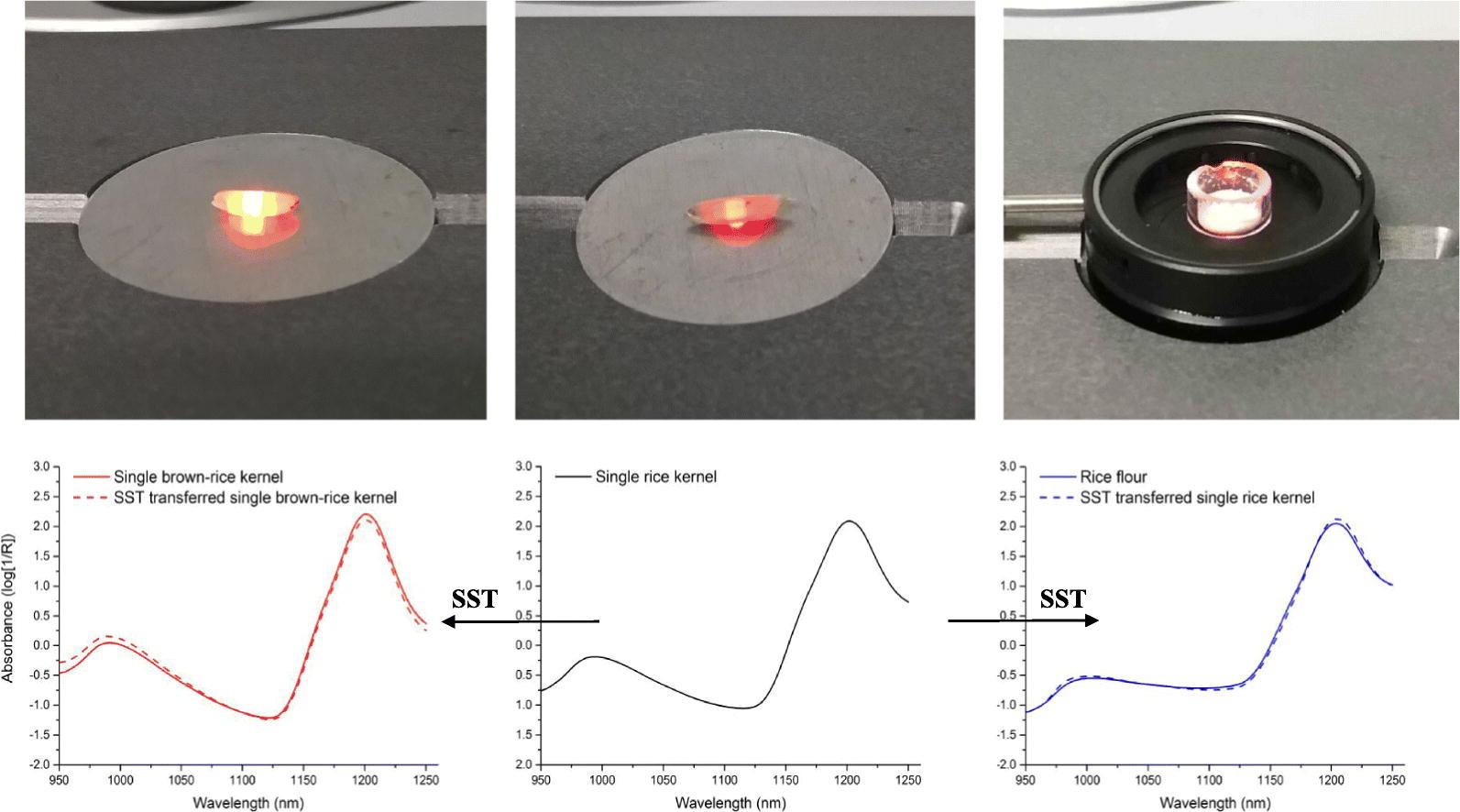
Recently, Prof. WU Yuejin and his colleagues from Institute of Technical Biology & Agriculture Engineering, Hefei Institutes of Physical Science (CAHIPS) developed an optimizing method to improve the prediction performance of single kernel near infrared spectroscopic analysis.
Single kernel near-infrared spectroscopy (SKNIRS) is a rapid, non-destructive, and multi-component analysis technique to detect the composition of individual crop seed in early generations. It is expected to be widely used in the seed breeding industry to improve the efficiency of seed breeding.
However, due to the irregular physical characteristics, the heterogeneous constituent distributions of individual seeds, and the insufficient detection accuracy of the reference chemical method, the prediction performance of SKNIRS is reduced and the its application is limited as well.
To overcome those problems, Prof. WU and his colleagues proposed a calibration transfer optimized SKNIRS method.
The calibration transfer is often used to calibrate the spectra measured on different instruments, and in this study, it was innovatively applied to solve the individual seed detection.
The team used a calibration transfer algorithm, spectral space transformation (SST), to transfer the spectra profile of single seed into the corresponding spectra profiles of single dehusked seed and seed flour for further analysis.
After the above treatments, the prediction results of seed constituent near infrared analysis models were close to or even better than those of the direct method.
According to the result, the team believed that the difficulties encountered in SKNIRS might be overcome.
This work has been successfully applied to the detection of protein content of single rice kernels, and it could be popularized and applied in more seed constituents and more crop seeds.
This work was financially supported by the National Natural Science Foundation of China and the Strategic Priority Research Program of the Chinese Academy of Sciences.

The near-infrared diffuse transmission spectra of three rice forms (single rice kernel, single brown-rice kernel and rice flour) can be transferred to each other by using SST algorithm (Image by XU Zhuopin)

86-10-68597521 (day)
86-10-68597289 (night)

52 Sanlihe Rd., Xicheng District,
Beijing, China (100864)

